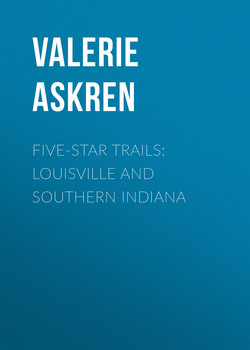Читать книгу Five-Star Trails: Louisville and Southern Indiana - Valerie Askren - Страница 9
На сайте Литреса книга снята с продажи.
ОглавлениеAcknowledgments
Hiking and walking opportunities abound in the Greater Louisville area, thanks in part to those 19th-century visionaries who believed that communing with nature was essential in order for urban dwellers to thrive. With the establishment of the city’s first park, Baxter Square Park, in 1880 and the purchase of a 313-acre tract of land called Burnt Knob (which later became Iroquois Park) by Mayor Charles Jacob in 1888, Louisville laid the foundation for a metropolitan area laced with urban forests, walking trails, picnic areas, and other forms of outdoor recreation.
Louisville established the Board of Parks Commissioners in 1890 with the intent of developing a park in each section of the city: east, west, and south, with the north bounded by the Ohio River. A year later the city hired Frederick Law Olmsted, the father of American landscape architecture, to design seven parks plus several interconnecting parkways. Olmsted was already well known for designing such notable spaces as Central Park in New York; the Niagara Reservation, adjoining Niagara Falls; George Vanderbilt’s Biltmore Estate, in North Carolina; Chicago’s “Emerald Necklace” of parks and boulevards; and the grounds surrounding the U.S. Capitol. Clearly, the city of Louisville was aiming high in its desire to build a world-class park system.
Throughout the 20th century, Louisville continued investing in that system by acquiring land to establish the Jefferson Memorial Forest—now the nation’s largest urban forest—in 1946 and the “Rainbow Chain of County Parks” in the 1950s, as well as creating a unified city–county Metropolitan Park and Recreation Board in 1968.
And Louisville hasn’t even begun to slow down. The 21st century has brought a host of new land acquisitions, including the Louisville Extreme Park and several historic properties; the latest addition, the nearly 4,000-acre Parklands of Floyds Fork, is still under development. To preserve and expand the city’s park system in perpetuity, Louisville works with several nonprofit organizations such as 21st Century Parks, the Olmsted Park Conservancy, the Future Fund Land Trust, The Trust for Public Land, and the Louisville and Jefferson County Environmental Trust.
Outside Louisville, many other entities work diligently to protect our natural areas while providing additional opportunities for outdoor recreation. Private endowments (such as Bernheim Arboretum and Research Forest and Creasey Mahan Nature Preserve), nonprofit organizations (including The Nature Conservancy), state agencies (both Kentucky’s and Indiana’s state parks and nature preserves), and national forests and wildlife refuges all provide an endless array of hiking opportunities.
It is these partners and others whom we should acknowledge and thank for their vision and perseverance.
—Valerie Askren
